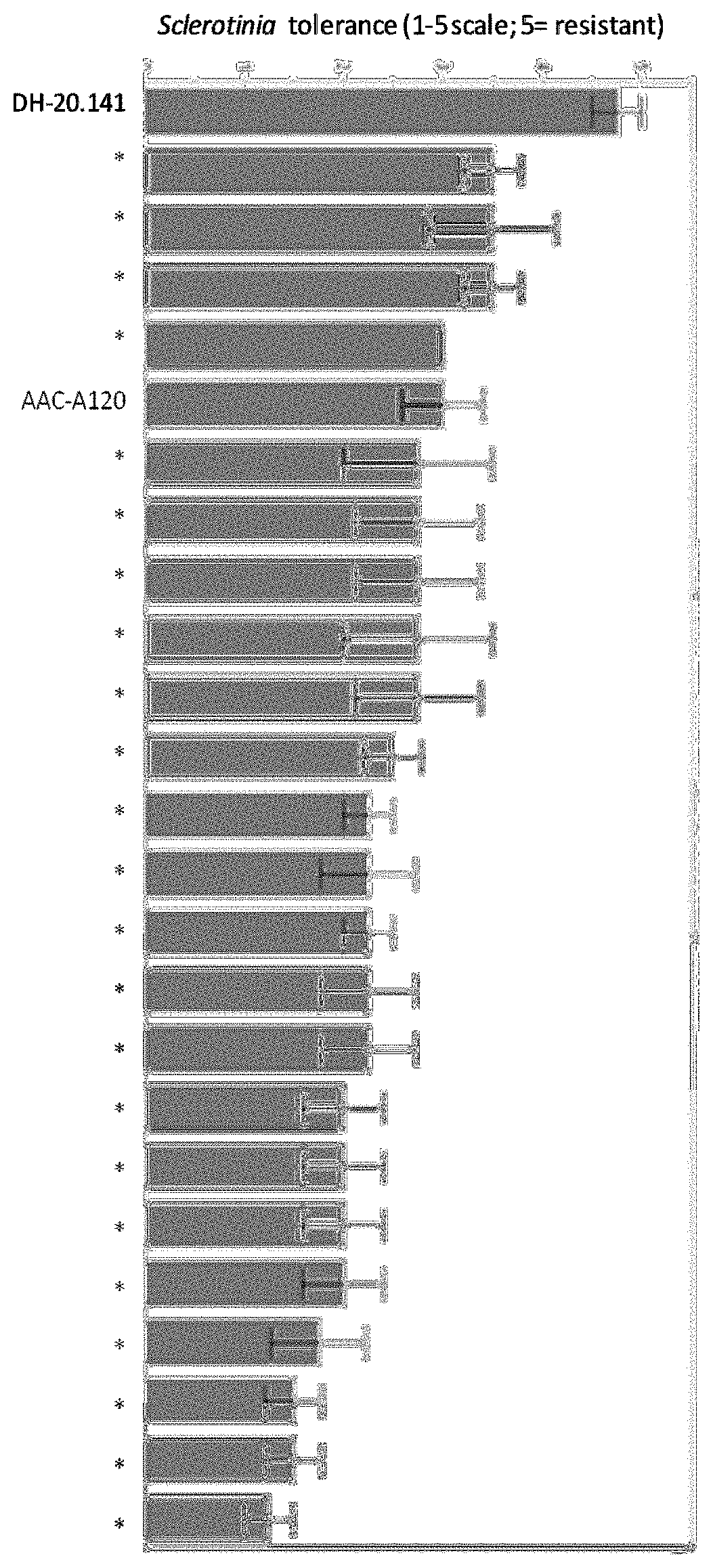Plants and seeds of Brassica carinata variety DH-20.141
a technology of brassica carinata and plant seeds, which is applied in the field of new brassica carinata variety dh20.141, can solve the problems of reducing feed palatability and adversely affecting animal health, and achieve the effect of improving tolerance or resistance to sclerotinia infection
- Summary
- Abstract
- Description
- Claims
- Application Information
AI Technical Summary
Problems solved by technology
Method used
Image
Examples
example 1
als
[0508]Small plot field experiments were conducted in Western Canada, in selected southeast or northern states of the United States, or in Uruguay, using best agronomic practices for carinata as describe the “Carinata Management Handbook” for the southeastern United States (agrisoma.com / ckfinder / userfiles / files / 2017_18_SE_Handbook.pdf) or for the northern tier United States and Canadian prairies (growcarinata.com / ckfinder / userfiles / files / US%20Northern%20Plains_handbook_2018.pdf). A number of newly developed carinata varieties, including DH-20.141 were grown in a Randomized Complete Block Design trial (RCBD), comprising 4 replicate plots (unless otherwise noted) along with plots of check varieties AAC-A120 and / or AGR044-312D-HP11 (henceforth referred to as “AGR044-HP11” or “HP11”). During the course of the trials, the experimental varieties and check varieties were closely observed, and descriptions of phenotypic characteristics and agronomic traits were recorded. After plants had ...
example 2
Characteristics of DH-20.141 when Grown in SE United States
[0509]The southeastern states of Florida, Georgia, Alabama and others constitute an important carinata growing region. Farmers in this region would benefit from a crop that can be grown during the winter months as a cover crop, replacing the normal winter fallow in their rotations, allowing them an additional cash crop option while providing soil benefits that may in turn benefit other crops in their rotation. In order to identify those varieties with suitable productivity and agronomic properties in the low daylight hour / winter cropping scenario, field trial evaluations of new carinata varieties in this region are carried out, selecting the best adapted varieties for the local environment. These as described in Example 1 and serve to identify best candidates for commercialization based on comparing agronomic traits, seed yield and quality as well as multi-year performance to those of commercial check varieties.
[0510]As desc...
example 3
lds of DH-20.141 from Trials Conducted During Winter of 2015-2016 and 2016-2017 in SE USA
[0518]For the purpose of assessing the yield potential of new and experimental carinata varieties, including DH-20.141, relative to commercial check varieties, a series of replicated yield trials designed as described in Example 1 were carried out during winter 2015-2016 and 2016-2017 in southeast US. Trials were carried out at four sites; however, all but one of the sites (Quincy, F1) demonstrated coefficients of variation (C of V) for yields too high (>15%) to be considered reliable. Therefore. only yield data from Quincy were considered. After maturity had been reached, seeds were harvested from the center 5′ of each plot (5 rows), cleaned and dried in a forced air oven at 50° C. for at least 72 h, subsequently weighed for yield determination and the seed analyzed for test weight and moisture using a Steinlite SL95 Moisture Meter. Reported yields, tabulated in Table 2, have been adjusted to 8...
PUM
 Login to View More
Login to View More Abstract
Description
Claims
Application Information
 Login to View More
Login to View More - R&D
- Intellectual Property
- Life Sciences
- Materials
- Tech Scout
- Unparalleled Data Quality
- Higher Quality Content
- 60% Fewer Hallucinations
Browse by: Latest US Patents, China's latest patents, Technical Efficacy Thesaurus, Application Domain, Technology Topic, Popular Technical Reports.
© 2025 PatSnap. All rights reserved.Legal|Privacy policy|Modern Slavery Act Transparency Statement|Sitemap|About US| Contact US: help@patsnap.com

